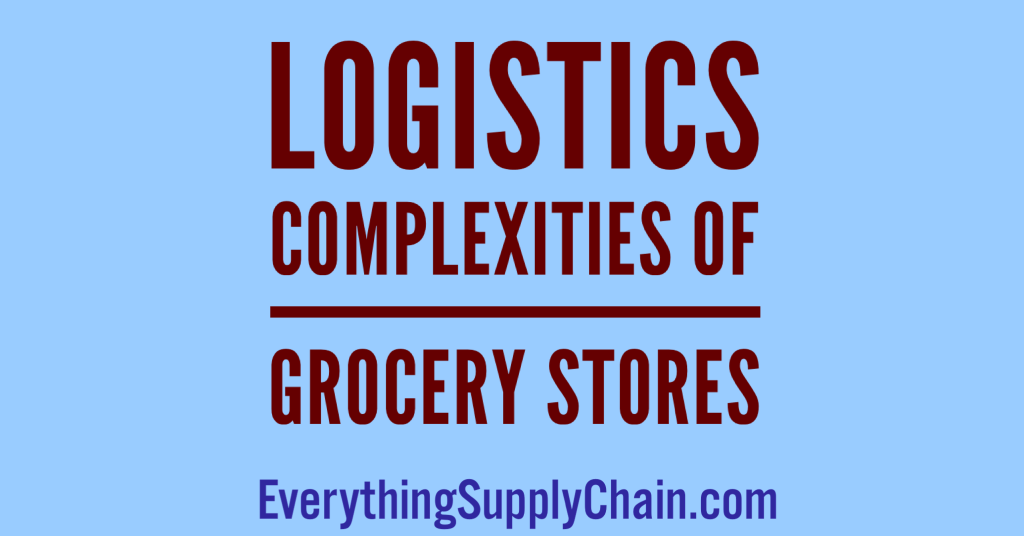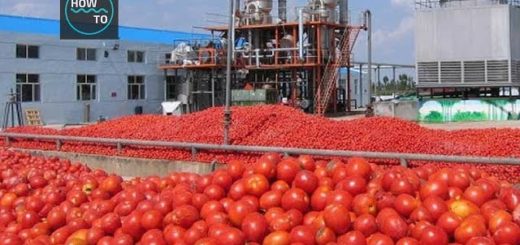The logistics complexities of grocery stores.
Navigating the Grocery Maze: Solving the Logistical Challenges of Grocery Stores.
Grocery stores are a vital part of our everyday lives, providing us with the food and other items we need to survive. However, the logistics of running a grocery store are complex and require careful planning and management. From stocking shelves to managing inventory, there are many factors that go into ensuring a successful grocery store operation. In this article, we will explore the logistics complexities of grocery stores and how they can be managed effectively.
Understanding the Role of Supply Chain Management in Grocery Store Logistics
Grocery stores rely on efficient supply chain management to ensure that their shelves are stocked with the products customers need. Supply chain management is the process of overseeing and coordinating the flow of goods and services from the supplier to the customer. It involves the coordination of activities such as procurement, production, inventory management, transportation, and distribution.
In the grocery store industry, supply chain management is essential for ensuring that products are delivered on time and in the right quantities. This is especially important for perishable items, such as produce and dairy products, which have a limited shelf life. By managing the supply chain, grocery stores can ensure that these items are delivered fresh and in a timely manner.
In addition to ensuring that products are delivered on time, supply chain management also helps grocery stores reduce costs. By managing the supply chain, grocery stores can identify areas where they can reduce costs, such as by negotiating better prices with suppliers or streamlining their transportation processes. This helps them keep their prices competitive and their profits high.
Finally, supply chain management helps grocery stores ensure that their customers have access to the products they need. By managing the supply chain, grocery stores can ensure that their shelves are stocked with the right products at the right time. This helps them meet customer demand and keep their customers satisfied.
In summary, supply chain management is essential for grocery stores to ensure that their shelves are stocked with the products customers need. It helps them reduce costs, ensure timely delivery of products, and meet customer demand. By managing the supply chain, grocery stores can ensure that their customers have access to the products they need and that their profits remain high.
Examining the Role of Third-Party Logistics Providers in Grocery Stores
Third-party logistics providers (3PLs) are becoming increasingly important in the grocery store industry. 3PLs are companies that provide services such as warehousing, transportation, and inventory management to grocery stores. By outsourcing these services to 3PLs, grocery stores can reduce their costs and improve their efficiency.
The role of 3PLs in the grocery store industry is multifaceted. 3PLs can provide a variety of services, such as warehousing, transportation, and inventory management. By outsourcing these services to 3PLs, grocery stores can reduce their costs and improve their efficiency. 3PLs can also help grocery stores manage their supply chain more effectively. They can provide real-time data on inventory levels, allowing grocery stores to better anticipate customer demand and adjust their ordering accordingly.
In addition to providing services, 3PLs can also help grocery stores improve their customer service. 3PLs can provide customers with faster delivery times and more accurate order tracking. This can help grocery stores build customer loyalty and increase their sales.
Finally, 3PLs can help grocery stores reduce their environmental impact. By using 3PLs, grocery stores can reduce their carbon footprint by reducing the number of trucks on the road and using more efficient transportation methods.
In conclusion, 3PLs are becoming increasingly important in the grocery store industry. By outsourcing services such as warehousing, transportation, and inventory management to 3PLs, grocery stores can reduce their costs and improve their efficiency. 3PLs can also help grocery stores improve their customer service and reduce their environmental impact.
Analyzing the Role of Technology in Grocery Store Logistics
Technology has revolutionized the grocery store industry, allowing for more efficient and cost-effective logistics. From automated inventory management systems to online ordering and delivery, technology has enabled grocery stores to streamline their operations and better serve their customers.
Inventory management systems are a key component of grocery store logistics. These systems allow stores to track their inventory in real-time, ensuring that shelves are stocked with the right products at the right time. This helps stores avoid overstocking, which can lead to spoilage and lost profits. Additionally, these systems can be used to identify trends in customer purchasing habits, allowing stores to better anticipate customer needs and stock accordingly.
Online ordering and delivery have also become increasingly popular in the grocery store industry. Customers can now order their groceries online and have them delivered to their doorsteps. This eliminates the need for customers to visit the store, saving them time and money. Additionally, online ordering systems can be integrated with inventory management systems, allowing stores to better manage their stock levels and ensure that orders are fulfilled quickly and accurately.
Finally, technology has enabled grocery stores to better manage their supply chains. By leveraging data analytics, stores can identify potential issues in their supply chains and take steps to address them. This helps stores ensure that their products are delivered on time and in the right quantities. Additionally, stores can use technology to track their shipments and monitor their suppliers, allowing them to better manage their supply chains and ensure that their customers receive the best possible service.
In conclusion, technology has revolutionized the grocery store industry, allowing stores to better manage their logistics and better serve their customers. From automated inventory management systems to online ordering and delivery, technology has enabled stores to streamline their operations and ensure that their customers receive the best possible service.
The Impact of E-Commerce on Grocery Store Logistics
The emergence of e-commerce has had a significant impact on the logistics of grocery stores. As more consumers turn to online shopping for their grocery needs, grocery stores must adapt their logistics to accommodate the new demands of the digital marketplace.
One of the most significant changes to grocery store logistics is the need for increased delivery capabilities. As more customers opt for online grocery shopping, grocery stores must be able to deliver orders quickly and efficiently. This requires an investment in delivery infrastructure, such as vehicles, drivers, and tracking systems. Additionally, grocery stores must ensure that their delivery systems are secure and reliable, as customers expect their orders to arrive on time and in good condition.
Another major change to grocery store logistics is the need for improved inventory management. As customers shop online, grocery stores must be able to accurately track their inventory levels and ensure that they have enough stock to meet customer demand. This requires an investment in inventory management systems, such as barcode scanners and automated ordering systems. Additionally, grocery stores must ensure that their inventory is properly stored and rotated to prevent spoilage and waste.
Finally, grocery stores must also invest in customer service systems to ensure that customers have a positive experience when shopping online. This includes providing customer support via phone, email, and live chat, as well as offering flexible payment options and easy returns. Additionally, grocery stores must ensure that their websites are user-friendly and secure, as customers expect a seamless online shopping experience.
In conclusion, the emergence of e-commerce has had a significant impact on the logistics of grocery stores. Grocery stores must invest in delivery infrastructure, inventory management systems, and customer service systems in order to meet the demands of the digital marketplace. By doing so, grocery stores can ensure that their customers have a positive online shopping experience and remain competitive in the digital marketplace.
The Benefits of Automation in Grocery Store Logistics
Automation in grocery store logistics has become increasingly popular in recent years, offering a range of benefits to both customers and store owners. Automation can help to streamline the grocery store supply chain, reduce costs, and improve customer service.
One of the primary benefits of automation in grocery store logistics is improved efficiency. Automation can help to reduce the amount of time and labor required to manage the supply chain, allowing store owners to focus on other aspects of their business. Automation can also help to reduce the amount of time it takes to process orders, allowing customers to receive their items faster. Automation can also help to reduce the amount of paperwork and manual data entry required, which can help to reduce errors and improve accuracy.
Automation can also help to reduce costs associated with grocery store logistics. Automation can help to reduce the amount of labor required to manage the supply chain, which can help to reduce labor costs. Automation can also help to reduce the amount of time it takes to process orders, which can help to reduce shipping costs. Automation can also help to reduce the amount of paperwork and manual data entry required, which can help to reduce administrative costs.
Finally, automation can help to improve customer service. Automation can help to reduce the amount of time it takes to process orders, allowing customers to receive their items faster. Automation can also help to reduce the amount of paperwork and manual data entry required, which can help to reduce errors and improve accuracy. Automation can also help to reduce the amount of time it takes to respond to customer inquiries, allowing store owners to provide better customer service.
In conclusion, automation in grocery store logistics offers a range of benefits to both customers and store owners. Automation can help to streamline the grocery store supply chain, reduce costs, and improve customer service. Automation can help to reduce the amount of time and labor required to manage the supply chain, reduce the amount of time it takes to process orders, and reduce the amount of paperwork and manual data entry required. Automation can also help to reduce costs associated with grocery store logistics and improve customer service.
Exploring the Challenges of Grocery Store Logistics in Urban Areas
Grocery store logistics in urban areas present a unique set of challenges that must be addressed in order to ensure efficient and cost-effective operations. From the need for efficient delivery systems to the challenge of limited space, grocery stores in urban areas must be prepared to address these issues in order to remain competitive.
One of the primary challenges of grocery store logistics in urban areas is the need for efficient delivery systems. With limited space and high population density, urban areas often lack the infrastructure necessary to support traditional delivery methods. As a result, grocery stores must find alternative solutions that are both cost-effective and efficient. This may include the use of smaller delivery vehicles, such as electric bikes or scooters, or the implementation of a delivery service that utilizes existing public transportation networks.
Another challenge of grocery store logistics in urban areas is the limited space available for storage and distribution. With limited space, grocery stores must find creative solutions to maximize their storage capacity. This may include the use of vertical storage systems, the implementation of automated systems, or the use of off-site storage facilities. Additionally, grocery stores must be prepared to manage the increased demand for delivery services in urban areas, as customers may not have the time or resources to pick up their groceries in person.
Finally, grocery stores in urban areas must be prepared to address the unique needs of their customers. This may include offering a variety of payment options, such as cash, credit, or mobile payments, as well as providing a wide selection of products that cater to the diverse tastes of their customers. Additionally, grocery stores must be prepared to offer services such as online ordering and delivery, as well as providing a convenient and secure shopping experience.
Grocery store logistics in urban areas present a unique set of challenges that must be addressed in order to ensure efficient and cost-effective operations. By understanding the needs of their customers and implementing creative solutions to address the challenges of limited space and efficient delivery systems, grocery stores in urban areas can remain competitive and provide a convenient and secure shopping experience for their customers.
How Grocery Stores Utilize Logistics to Optimize Inventory Management
Grocery stores are highly dependent on efficient logistics to ensure that their inventory is managed in an optimal manner. Logistics is the process of planning, implementing, and controlling the efficient and effective flow of goods and services from the point of origin to the point of consumption. By utilizing logistics, grocery stores are able to ensure that their inventory is managed in a way that maximizes efficiency and minimizes costs.
One of the primary ways in which grocery stores utilize logistics to optimize inventory management is through the use of inventory tracking systems. These systems allow stores to track the movement of goods from the point of origin to the point of consumption. This allows stores to identify any potential issues with their inventory, such as overstocking or understocking, and take corrective action. Additionally, these systems can be used to identify trends in customer demand, allowing stores to adjust their inventory accordingly.
Another way in which grocery stores utilize logistics to optimize inventory management is through the use of supply chain management. Supply chain management is the process of managing the flow of goods and services from the point of origin to the point of consumption. This includes the coordination of activities such as procurement, production, distribution, and customer service. By utilizing supply chain management, grocery stores are able to ensure that their inventory is managed in a way that maximizes efficiency and minimizes costs.
Finally, grocery stores utilize logistics to optimize inventory management through the use of warehouse management systems. These systems allow stores to track the movement of goods from the point of origin to the point of consumption. This allows stores to identify any potential issues with their inventory, such as overstocking or understocking, and take corrective action. Additionally, these systems can be used to identify trends in customer demand, allowing stores to adjust their inventory accordingly.
By utilizing logistics, grocery stores are able to ensure that their inventory is managed in a way that maximizes efficiency and minimizes costs. Through the use of inventory tracking systems, supply chain management, and warehouse management systems, grocery stores are able to optimize their inventory management and ensure that their customers are provided with the best possible service.
Conclusion
The logistics complexities of grocery stores are vast and varied. From managing inventory to ensuring customer satisfaction, grocery stores must be able to effectively manage their supply chain in order to remain competitive. With the right strategies and technologies in place, grocery stores can ensure that their customers receive the freshest products in a timely manner. By understanding the complexities of the grocery store supply chain, grocery stores can ensure that their customers have a positive shopping experience.
Grocery Store and Retail Supply Chain Resources
- A 360° tour of Ocado’s automated warehouse.
- Amazon uses AI to deliver orders even faster.
- Automating the Grocery Warehouse
- Battle of the Robot Armies – Jeff Bezos vs Elon Musk.
- E-Commerce Retailer Doubles Warehouse Capacity with Robotic Goods to Person System.
- Grocery Robots Doing the Shopping For You.
- How Walmart Is Automating Its Supply Chain for Delivery.
- Inside A Warehouse Where Thousands Of Robots Pack Groceries.
- Ocado develops robotic hand to pick groceries for customers’ orders
- Ocado Technology has successfully trialed driverless grocery deliveries.
- Supply Chain Resources by Topic & Supplier
- Supply Chain Today: Supply Chain Research, News, and Training.
- Target Supply Chain Strategy to Beat Amazon and Walmart’s Fast Delivery.
- The Gigantic Grocery Warehouses Built like Living Organisms.
- World’s Largest Wine & Spirits Distribution Center Invests in Automation & Software










































